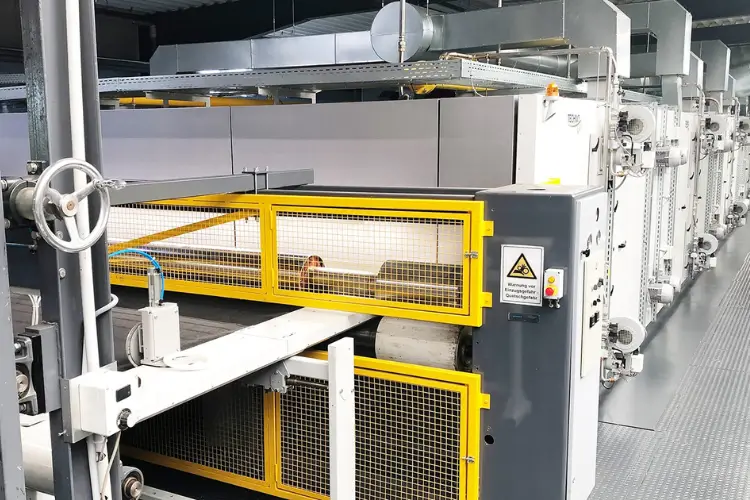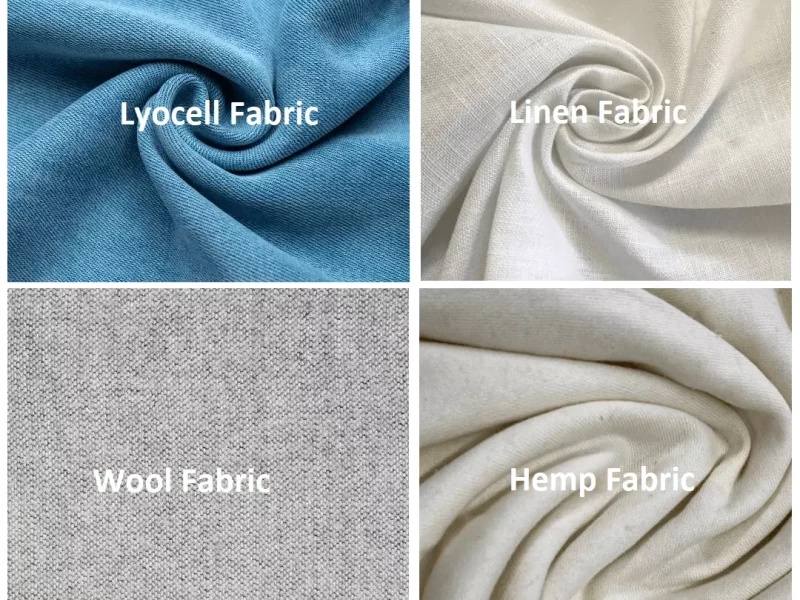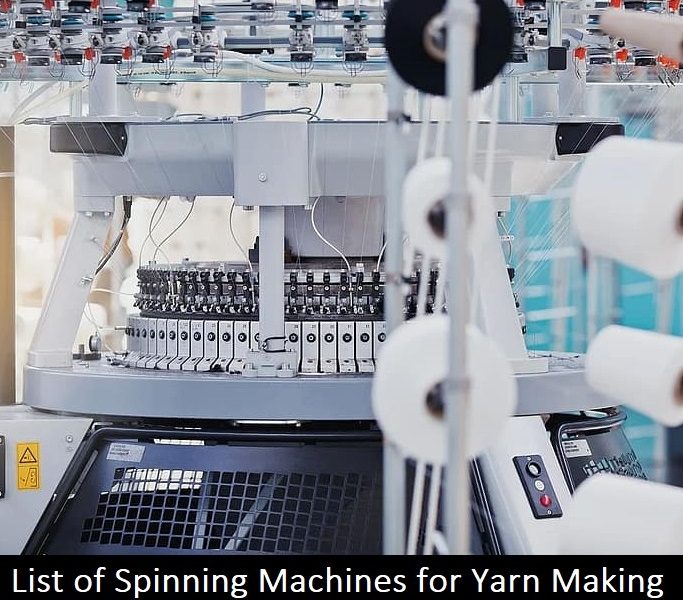I. Introduction
Textile finishing is a crucial stage in the fabric manufacturing process, transforming raw textiles into high-quality products ready for consumer use. Stenter Machines for Textile Finishing determines the final appearance, texture, and performance of the fabric, making it essential for achieving desired qualities such as softness, durability, and dimensional stability. At the heart of textile finishing lies the stenter machine, a vital piece of equipment that plays a pivotal role in setting, drying, and ensuring the fabric meets specific standards. These machines are indispensable in the textile industry, offering a wide range of applications from basic drying to specialized finishing effects, making them a powerhouse in fabric finishing.
II. What is a Stenter Machine?
A stenter machine is a textile finishing machine designed to stretch, dry, and set fabrics to their desired dimensions and properties. It operates by holding the fabric at its edges and applying heat and tension, ensuring the fabric is processed uniformly. This process helps achieve consistent width, even texture, and stable dimensions, which are critical for the final product’s quality.
The stenter machine consists of several key components:
- Chain Conveyor: Moves the fabric through the machine while maintaining tension.
- Heating Chamber: Applies controlled heat to dry and set the fabric.
- Cooling Zone: Gradually reduces the fabric’s temperature to stabilize it after heat treatment.
- Tenter Clips: Hold the fabric at the edges and control the width during processing.
These components work together to ensure the fabric is stretched, dried, and set to meet specific requirements, making the stenter machine an essential tool in textile finishing.
III. Types of Stenter Machines
Stenter machines come in various types, each designed to cater to specific needs and applications. These can be categorized based on the heating medium, fabric type, and special applications.
1. By Heating Medium:
- Gas-fired Stenters: Use natural gas as the heat source. They are cost-effective and offer rapid heating, but require proper ventilation due to gas emissions.
- Electric Stenters: Utilize electric heaters, providing precise temperature control. These are ideal for delicate fabrics but can be more expensive to operate.
- Steam Stenters: Operate using steam, offering uniform heating. They are energy-efficient and suitable for a wide range of fabrics but require a reliable steam supply.
2. By Fabric Type:
- Woven Fabric Stenters: Designed for processing woven fabrics, ensuring they are evenly stretched and dried without distortion.
- Knitted Fabric Stenters: Specifically adapted to handle the elasticity of knitted fabrics, preventing shrinkage and ensuring proper width.
- Nonwoven Fabric Stenters: Used for nonwoven fabrics, focusing on maintaining the integrity and uniformity of the material.
3. By Special Applications:
- High-Speed Stenters: Built for high-volume production, these machines offer faster processing times without compromising quality.
- High-Temperature Stenters: Capable of operating at elevated temperatures for specific finishes, such as heat setting for wrinkle resistance.
- Tentering Stenters with Specific Finishing Effects: These machines are equipped with additional features for specialized finishes like sanforizing (for shrinkage control) or calendaring (for smoothness and gloss).
Each type of stenter machine offers distinct advantages and disadvantages, depending on the specific needs of the textile operation. Understanding these differences is crucial for selecting the right machine for the job.
IV. Key Functions of a Stenter Machine
The stenter machine performs several key functions that are essential in textile finishing:
1. Width Setting: Stenter machines excel at controlling the fabric’s width, ensuring it meets the specified dimensions. By applying tension at the edges, the machine prevents fabric distortion and maintains consistency throughout the batch.
2. Drying: Stenter machines employ various drying methods, such as impingement drying (where hot air is blown onto the fabric) and through-air drying (where air passes through the fabric). These methods remove moisture efficiently while preserving the fabric’s properties.
3. Curing: Curing is essential for certain finishes, such as wrinkle resistance or color fastness. Stenter machines provide controlled heat treatment to “cure” the fabric, locking in these desirable characteristics.
4. Tentering: This process ensures dimensional stability by stretching the fabric to its desired width and setting it in place. It also influences the fabric’s hand feel, making it softer or firmer as needed.
5. Cooling: Proper cooling is crucial after drying and curing to stabilize the fabric. Stenter machines include cooling zones that gradually reduce the fabric’s temperature, preventing any thermal shock that could affect its quality.
These functions collectively contribute to the high-quality output that stenter machines are known for, making them indispensable in the textile finishing process.
V. Benefits of Using Stenter Machines
Stenter machines offer numerous benefits to textile manufacturers and finishers:
- Improved Fabric Quality: Stenter machines enhance fabric quality by ensuring dimensional stability, even texture, and the desired hand feel, making the fabric more appealing and functional.
- Increased Production Efficiency: These machines allow for faster processing times, increasing overall production efficiency and reducing lead times.
- Versatility: Stenter machines can handle a wide variety of fabrics and finishes, making them suitable for diverse applications in the textile industry.
- Reduced Energy Consumption: Modern stenter machines are designed with energy efficiency in mind, helping manufacturers lower their operational costs and environmental impact.
VI. Considerations When Choosing a Stenter Machine
Selecting the right stenter machine involves several key considerations:
- Production Capacity: Ensure the machine can handle the volume of fabric you need to process, considering both current and future production demands.
- Fabric Types and Desired Finishes: Choose a machine that is compatible with the types of fabrics you work with and can achieve the desired finishes.
- Budget and Space Constraints: Evaluate your budget and the available space in your facility to ensure the machine fits within both.
- Environmental Considerations: Look for machines that offer energy-efficient operation, as this can significantly reduce your environmental footprint and operational costs.
VII. Conclusion
Stenter machines are truly the powerhouse of textile finishing, offering unmatched capabilities in stretching, drying, and setting fabrics. Their role in ensuring fabric quality, efficiency, and versatility makes them indispensable in modern textile manufacturing. As technology continues to advance, we can expect even more innovative features and improvements in stenter machines, further solidifying their importance in the textile industry.




